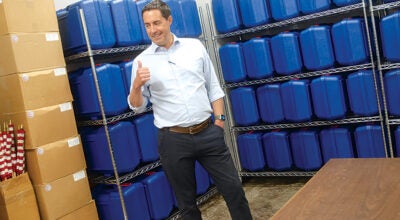Rough weekend for drivers
Published 7:55 am Tuesday, January 16, 2018
11 accidents reported to Ohio State Highway Patrol
It was a rough weekend for drivers.
Friday’s rain turned to ice and snow. Lawrence County Sheriff issued a Level 1 snow emergency at 9:21 p.m., saying that roadways were hazardous with blowing and drifting snow and could be icy. By 11 p.m., it had been bumped up to a Level 2 snow emergency and he asked people to not drive during the snow event if at all possible.
It was reduced back to Level 1 on Saturday morning and remains in effect until the weather gets warmer and road conditions improve. The forecast for Tuesday called for more snow and more subfreezing weather. It will be Thursday before daytime temperatures are above 32 degrees.
Sgt. Shane Salyers of the Ironton Post of the Ohio State Highway Patrol said troopers investigated around 11 accidents over the weekend.
“There was nothing major,” he said. “It was a lot of sliding off into the ditch. It was things that if the driver had been a little more cautious, it could have been prevented.”
Salyers said that it easy to prepare for forecasted bad weather.
“If you don’t have to get out in it, don’t” he said. “I know people have to work, but they can leave a little earlier and give themselves more time. If you drive at a slower speed, it is easier to control the vehicle.”
He said that the Ohio Department of Transportation does an excellent job cleaning the main routes.
“But again, some state routes and county routes where it is shady, are harder to clear,” Salyers said. “The county does the best they can, but there are a lot of roads.”
AAA offers several tips for driving in snow and icy conditions.
• Accelerate and decelerate slowly. Applying the gas slowly to accelerate is the best method for regaining traction and avoiding skids. Don’t try to get moving in a hurry. And take time to slow down for a stoplight. Remember: It takes longer to slow down on icy roads.
• Drive slowly, since everything takes longer on snow-covered roads.
• The normal dry pavement following distance of three to four seconds should be increased to eight to ten seconds. This increased margin of safety will provide the longer distance needed if you have to stop.
• Don’t stop if you can avoid it. There’s a big difference in the amount of inertia it takes to start moving from a full stop versus how much it takes to get moving while still rolling. If you can slow down enough to keep rolling until a traffic light changes, do it.
• Don’t power up hills. Applying extra gas on snow-covered roads just starts your wheels spinning. Try to get a little inertia going before you reach the hill and let that inertia carry you to the top. As you reach the crest of the hill, reduce your speed and proceed down hill as slowly as possible.
• Don’t stop going up a hill. Get some inertia going on a flat roadway before you take on the hill.
• Stay home. If you really don’t have to go out, don’t. Even if you can drive well in the snow, not everyone else can.





